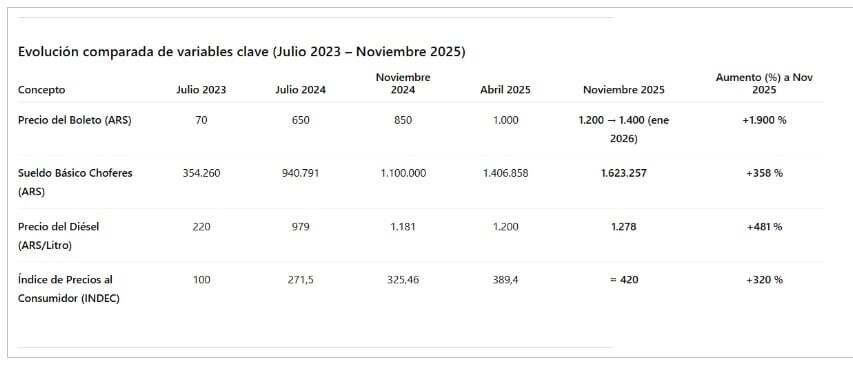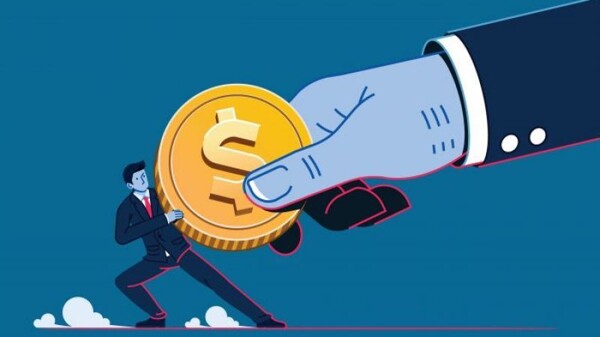
Mario Vadillo, a leading expert in Consumer Defense, has analyzed in detail the recent public transport fare increase in Mendoza and warned that the adjustment «has no technical or economic justification».
«By the book: they win the elections and they raise the bus fare. The most important inputs grew four times less than the fare,» explained Vadillo.
According to technical studies by the Provincial Mobility Entity (EMOP), costs are broken down as follows:
Personnel (salaries and social charges): 38.02% Fuel, electricity, and lubricants: 20.44% Maintenance: 15.57% Amortization, investment, and profitability: 9.88% VAT and tax credit: 7.49% Minor taxes: 4.34% Other operating expenses: 4.26%
«More than 58% of the cost per kilometer is explained by easily measurable variables: salaries and fuel. And he added: «The State guarantees the cash flow, companies risk nothing, and the user finances a system that does not improve or render accounts,» he indicated.
«Mendoza's transport system is going through a crisis of technical and legitimacy. This not only increases consumption and costs but also compromises the safety of users and drivers. The difference is guaranteed profitability for companies, not an economic balance,» he stressed.
A system without control and with million-dollar subsidies
According to EMOP, the real technical cost of the trip per passenger amounts to $2,912.43. «Transport must return to being a service for the people, not a cash box for companies.»
«This is not a public service: it is a business with a state subsidy,» Vadillo sentenced.
Finally, he concluded: «The urgent challenge is to restore rationality and transparency to the system. The Government uses the transport fare as a mechanism for covert transfer to companies, in a system without control or transparency,» stated Vadillo.
A fare that grows three times more than real costs
Between July 2023 and November 2025, the urban fare increased 1,900%, while the basic salary of drivers rose 358%, the price of diesel increased 481%, and general inflation was 320%.
«With these numbers, there is no possible equation that justifies such a leap. The Government adjusts after the elections, without control or audits. The fare is not based on real costs, but on political conveniences. The user pays $1,200, and the difference — more than $1,700 per fare — is covered with public funds from provincial taxes, such as Gross Income, Motor Vehicle, and Real Estate, and even from the electricity bill.»
«Each Mendoza resident pays for their trip twice: once when getting on the bus and a second time with their taxes, whether they use the service or not. Without access to data, the fare ceases to be an economic calculation to become a political decision. It is a political increase, not technical.»
«EMOP does not publish balance sheets or audits. Last year there were fires, breakdowns, and even victims,» Vadillo remarked.
Vadillo also questioned the lack of institutional transparency: «EMOP concentrates all the information of the system, but does not publish it. It is an imposed price, not an explained one,» he maintained.
In addition, he stated that the current model «does not reward efficiency, but dependence on subsidies». It is a double burden that violates the principles of dignified treatment and truthful information of Law 24.240 of Consumer Defense,» he pointed out.
During 2025, the system will absorb more than $200,000 million in subsidies without public control or correlation with service improvements. It is not known how many kilometers are traveled, how many passengers are transported, or how the funds are distributed,» he added.
Aging fleet and without supervision n The specialist recalled that Decree 1512/18 of Law 9086 requires urban units to have a maximum age of 10 years, but most of the buses circulating in Mendoza are over 12 or 15 years old.
«Mendoza does not comply with the norm, with vehicles that should be out of circulation. However, the fare grows well above these indicators.»













